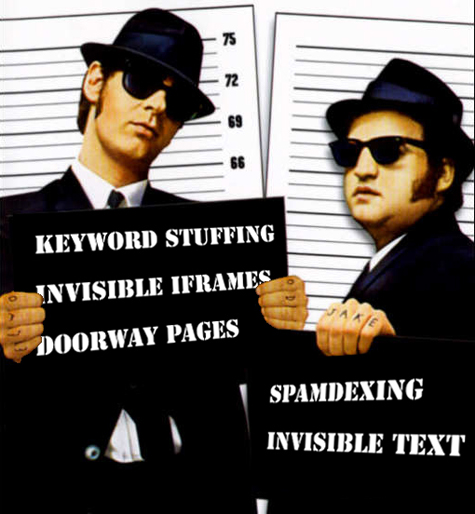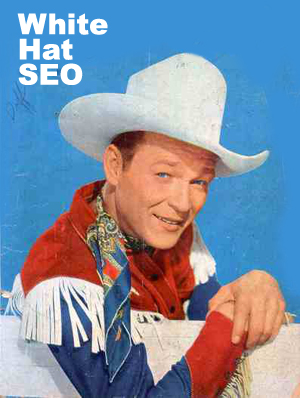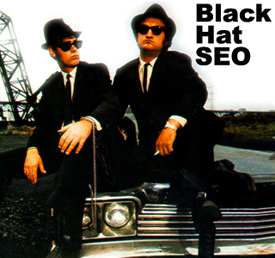
Search Engine Optimization; if you have a website you should know this phrase well. Everyone wants to get found. In fact, that’s one of the main reason’s that we are online. Before we can start relationships, build clientele and market our product or service we need to be found. If you are in business and you have a website, you more than likely are taking part in some type of SEO. But would your site fall under the category of Soul Man and the Blues Brothers, or Roy Rogers and Happy Trails? Perhaps the lines aren’t so black and white and your website falls in the Johnny Depp category below.
The following seven user generated definitions are compliments of Wikipedia. All the hyperlinks connect to further Wikipedia definitions.
SEO:
Search engine optimization is the process of improving the visibility of a website or a web page in search engines via the “natural” or un-paid (“organic” or “algorithmic”) search results. SEO considers how search engines work and what people search for.
SMO:
Social Media Optimization or Social SEO is the methodization of social media activity with the intent of attracting unique visitors to website content. SMO is one of two online methods of website optimization; the other method is search engine optimization or SEO.
SERP:
A search engine results page is the listing of web pages returned by a search engine in response to a keyword query. The results normally include a list of web pages with titles, a link to the page, and a short description showing where the Keywords have matched content within the page. A SERP may refer to a single page of links returned, or to the set of all links returned for a search query.
SEM:
Search engine marketing is a form of Internet marketing that seeks to promote websites by increasing their visibility in search engine result pages (SERPs) through the use of search engine optimization, paid placement, contextual advertising, and paid inclusion. So, to use them all in a sentence you could say, “SEM uses SEO and SMO to get the best SERP.” Don’t you just love acronyms? Regardless, it’s a good idea to revisit these terms and make sure you understand the differences, but the real question is, what color is your hat? What type of SEO is prevalent on YOUR website?
WHITE HAT SEO:
 White hat marketing applies the White hat SEO techniques, also known as ethical SEO. The white hat marketing implies that all SEO activities are carried out while conforming to the guidelines, rules and policies of search engines. It is an ethical guideline since all site managers abide to the written, as well as unwritten rules and guidelines for SEO. Some of these guidelines are:
White hat marketing applies the White hat SEO techniques, also known as ethical SEO. The white hat marketing implies that all SEO activities are carried out while conforming to the guidelines, rules and policies of search engines. It is an ethical guideline since all site managers abide to the written, as well as unwritten rules and guidelines for SEO. Some of these guidelines are:
- Providing relevant keywords that cater for short and long tails results
- Updating the content regularly
- Analyzing search results analytics reports and take corrective actions as required
- Providing links to other websites as well as requesting other networks to link to this website
BLACK HAT SEO:
 Black hat marketing involves SEO activities that are against the norms of search engines. Hence, black hat marketing is unethical. It is difficult for the search engine alone to distinguish when black hat SEO is applied. Competitors can play a role by reporting cases of black hat marketing to the search engines, who will in turn ban or penalise the website. Despite the risk of ban, marketers still can go for black hat marketing because it helps in boosting up the page location in search result. Example of Black hat marketing are:
Black hat marketing involves SEO activities that are against the norms of search engines. Hence, black hat marketing is unethical. It is difficult for the search engine alone to distinguish when black hat SEO is applied. Competitors can play a role by reporting cases of black hat marketing to the search engines, who will in turn ban or penalise the website. Despite the risk of ban, marketers still can go for black hat marketing because it helps in boosting up the page location in search result. Example of Black hat marketing are:
- keyword stuffing – keywords can be provided, among others, in meta tags,alt tags, comment tags, as invisible text to human eyes. By overusing the same keywords throughout a web page, search engines algorithm, that reads keywords, will drive the web page up in its search result.
- doorway and cloaked pages – web site contain web pages that are listed in search result. However, when entering these pages, users are redirected to other pages. Hence, the search result contents do not match the page displayed to users.
- link farming: A link farm is a form of spamming the index of a search engine (sometimes called spamdexing or spamexing).
GRAY HAT SEO:
 Gray hat marketing lies between white hat marketing and black hat marketing. Here, the site owner provides greater risks than white hat marketing, by disobeying to some of the search engine guidelines, but at the same time ensures limited disobedience so as not to fail into black hat marketing. For example, gray hat marketing may involve a keyword density higher than required but not too excessive. A website involved in gray hat marketing may face penalty, but may be safe from getting banned.
Gray hat marketing lies between white hat marketing and black hat marketing. Here, the site owner provides greater risks than white hat marketing, by disobeying to some of the search engine guidelines, but at the same time ensures limited disobedience so as not to fail into black hat marketing. For example, gray hat marketing may involve a keyword density higher than required but not too excessive. A website involved in gray hat marketing may face penalty, but may be safe from getting banned.
Happy SEO trails to you!
 Happy Trails has a whole new meaning when you think of it in terms of SEO trails and search engine marketing best practices. Roy Rogers and white hat SEO a.k.a. white hat marketing is the obvious choice. At the end of the day you want to sleep well and know that your SEO practices will not work against you. You want to run a fair and honest business. It seems apropos to tip my hat to my grandfather who was a very honest business man. And because he was a theater owner, (among many other things), he and my uncle were fortunate enough to meet Roy Rogers in the 40’s. Pretty cool huh?
Happy Trails has a whole new meaning when you think of it in terms of SEO trails and search engine marketing best practices. Roy Rogers and white hat SEO a.k.a. white hat marketing is the obvious choice. At the end of the day you want to sleep well and know that your SEO practices will not work against you. You want to run a fair and honest business. It seems apropos to tip my hat to my grandfather who was a very honest business man. And because he was a theater owner, (among many other things), he and my uncle were fortunate enough to meet Roy Rogers in the 40’s. Pretty cool huh?

Good blogging! Thanks or the info and love the Happy Trails touch. SERP and SEM are new words for me.
I like how you break it down. My Facebook friends are enjoying this too.
Thanks Cheryl. But just so you know, I didn’t break it down, Wikipedia did. I merely saved you some wikipedia search time. :)
I believe you should be posting the original source for your Gray hat marketing definition i.e. http://en.wikipedia.org/wiki/White_or_black_hat#Gray_Hat_Marketing. Thanks
Agreed Zara. I guess you overlooked the source that is very clearly posted in my blog above. “The following seven user generated definitions are compliments of Wikipedia. All the hyperlinks connect to further Wikipedia definitions.”
Sorry you didn’t see that. I am always up front with my sources, especially when I’m just re-posting a Wikipedia definition. The purpose of this post was really just to have all these definitions in one place for my clients.
Thanks for stopping by!
Most link building by most SEO firms is not “natural” and is in fact blackhat according to Google. If you have to pay for it, ask for it, comment for it or insert a link in your article to gain it, then you are manipulating Google search results and Google terms that as blackhat. You just need to view the many video’s by Matt Cutts to realize that if you are doing any of the above, then you are creating links manually and you violating Google’s TOS.
It simply baffles me how many SEO experts will quickly denounce Cloaking as “unethical” or against Google’s TOS or even label it as spam which manipulates search results but then on a daily basis create artificial, manual or software generated backlinks for clients.
If you are distributing countless articles with links or posting on blogs/forums to obtain backlinks or using automated backlinking software, isn’t that also spamming to manipulate search engine results?
What is the difference? It all violates Google’s TOS.
So does “blackhat” or being “unethical” really exist anymore? Isn’t this really about traffic, conversions and surviving within an ever tightening monopoly created by Google for which we now are left with few other options, unless to line the pockets of Google shareholders.
It is just not worth it to use black hat tactics given how Google continues to upgrade its algorithm that gets better at finding these unethical strategies and banning your site!
There is still so much I have to learn about blogging. Thanks for posting this. I will need to go back and read it again and again.